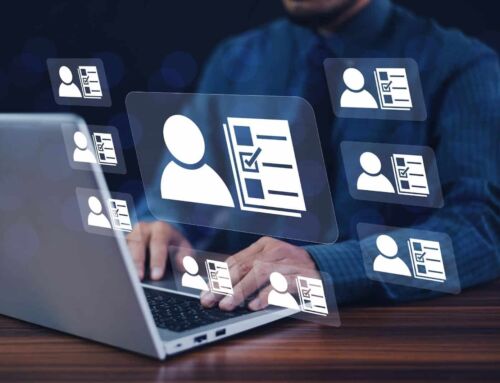[/fusion_builder_row][/fusion_builder_container]
Growth opportunities represent one of the most significant drivers of employee engagement. In fact, it has been cited as the number 1 engagement driver across all job functions in Aon Hewit’s 2014 Global Survey, making learning and development a focus for next year’s employee engagement strategies.
Employees expectations have not only grown exponentially, but they have also been molded by the explosion in HR software solutions that have made the future possible. Projecting learning lessons in an employee’s workspace when they’re not occupied or intuitive pop-ups when they need more information to complete an action are just some of the ways that employees are learning today.
While e-learning brought on a new way of designing learning and development programs, human interaction remains the best way to engage and grow employees.
Team learning
Shifting the focus from the individual to the team, as an evolving entity, ‘team learning’ or ‘network learning’ enables employees to extract and infuse value into the work of their peers. By sharing good case practices, personal challenges, resources and feedback, employees learn to perform as part of a team.
High performance is best achieved through solid, interconnected teams, who maximize the strengths of every member and use them to bring results and to grow.
While trainings and courses increase an employees’ ability to perform individual tasks, team learning allows them to develop in a dynamic context, molded to their personality and embedded in their work.
The role of HR
Team learning can be integrated in formal L&D programs, as well as in employees’ daily interactions. The role of HR is to teach employees how to learn.
As an HR manager, you need to set the framework and equip employees with the resources they need to create, share and analyze information. This framework should address the following aspects:
- Key development areas that support your company’s business objectives;
- The team’s learning goals for those development areas;
- Team members’ personal development goals;
- Learning methods;
- Timeframe;
- Evaluation method.
Every team will have their own learning dynamic. If the learning framework is set, you can simply observe and assist if needed.
The main idea behind this method is that information is no longer generated and dispersed by the HR function. Employees can create, modify and share their own learning objectives. On-the-job education has up to three times the impact on employee performance as formal classroom learning does and considerably increases employee engagement.
This transition from passive learning to productive learning can yield significant improvement in employees’ analytical and social skills. By contributing and participating to the learning process, team members will be more engaged with their work and better at working together.
Some things you only learn by actually working in a team
Things like:
- How to prioritize;
- How to manage conflicts;
- How to focus;
- How to collaborate with other people;
- Your strengths and weaknesses;
- What being in a position of authority entails;
- How, what and when to delegate;
- How to manage your time and energy.
There are a number of courses and programs that can inform you on these matters but you can’t really learn them until you’ve lived them.
Micro-learning
Micro-learning is a way of teaching and delivering content to learners in small, very specific bursts. The learners are in control of what and when they’re learning and it’s a growing trend in Learning Management Systems.
Software Advice, an LMS research site, recently published a study that found most employees surveyed (58 percent) would be more likely to use their company’s online learning tools if the content was broken up into multiple, shorter lessons.
For this study, employees were asked if they would be more encouraged to use their company’s online training tools if the content was broken up into lots of short, five- to seven-minute lessons, as opposed to a few hour-long lessons.
Fifty-eight percent of respondents said they would be more likely to use the LMS if it incorporated these shorter lessons. Only 11 percent of respondents said they would be less likely to use LMS technology with shorter lessons.
Likelihood to Use LMS With Micro-Learning
Mark Clare, founder of New Value Streams Consulting and an adjunct professor of cognitive design at Northwestern University, says micro-learning works because it is more in line with how our brains perceive and store information.
“Micro-learning is a necessary step in the cognitive process of learning from experience or making behavior changes,” Clare says. “Part of the popularity of blogs, tweets and YouTube is that they provide the micro-content that is more properly sized to the limitations of learning processes. They fit how our minds naturally work.”
What’s important to keep in mind when using this method is to incorporate micro-learning by tying the small bits of knowledge into a meaningful whole, so that employees can fully engage with their learning.
In one of his articles, Bryant Nielson discusses how Massive Open Online Courseware (MOOC)s can act as frameworks for a widespread range of micro learning activities – Megatrends in MOOCs: #4 Micro Learning Paths.
Real-life rewards as a gamification incentive
Gamification is another rising trend in employee learning and development and a market that’s currently expected to grow at 67.1% CAGR to 2018, according to a recent global gamification research report.
By using game techniques and game theory in an every-day business context, this method raises employee motivation and involvement.
In her new book, Gamification in Business, An Coppens explains how gamification can have a massive effect is as a feedback mechanism:
“What people are craving, and particularly millennials, is a level of feedback. In most organizations this is once or twice a year, but what games do is give everyone instant feedback on how you’re doing. I think that’s a key lever to play with – it’s what millennials want and what baby boomers haven’t received.”
But what aspects of gamification do employees find most enticing? Of those surveyed by Software Advice, 35 percent said that real-life rewards based on learning progress would be the top gamification incentive for using their company’s LMS, followed by level progression (25 percent) and awarding points for completed tasks (25 percent).
Other popular gamification elements, such as user avatars (8 percent) and leaderboards to compare progress with other employees (7 percent), were less of a draw.
Top LMS Gamification Incentives
“People may interpret ‘real-life rewards’ as valuable prizes, while others may interpret
[‘rewards’] as job progression (…) The former tends to motivate people in the short term, while job progression will motivate people in the long term.”
Brian Burke, vice president of research at Gartner and author of the book Gamify: How Gamification Motivates People To Do Extraordinary Things
One reason leaderboards may rank so low, he adds, is that features promoting competition can actually have a negative engagement effect.
“In my experience, competition can de-motivate a large segment of the target audience,” Burke says. “Collaborative gamification solutions tend to be more effective in training applications, since the business objective is to transfer skills to the entire target audience—not just a small group of ‘winners.’”
What learning and development method has worked best for your organization so far?
*Software Advice is a free online resource that helps organizations choose the right software. They connect software buyers with software vendors by offering free phone consultations where we shortlist products that meet their specific business needs.
Image credit: Ohio University Libraries under C.C.2.0







Leave A Comment